Like other countries, China’s civil aviation industry faces difficulties in fundamentally changing its aviation energy mix, which is primarily reliant on fossil jet fuel in the short term, and the large-scale application of deep decarbonisation technologies that balance availability and affordability. In the long term, as the most populous developing country, China has a vast potential demand for civil aviation transport, making the energy transition very challenging. However, a Five-Year Plan is underway for the green development of the industry. Against this backdrop is an insistence by China that the transition must be fair and equitable to developing countries, particularly regarding ICAO’s CORSIA scheme. Dr David Ma, an expert in Chinese civil aviation climate policy, analyses China’s current position.
As global climate issues intensify, countries around the world are formulating their own net-zero roadmaps in accordance with their national conditions. In 2020, China officially announced its climate goals of “striving to peak carbon dioxide emissions by 2030 and to achieve carbon neutrality by 2060”, incorporating climate change response as a national strategy.
In the following years, China issued guidelines and action plans at the national level, while key industries and sectors introduced implementation plans. The civil aviation industry, being a high-energy-consuming and high-emission sector, is one of the key areas that needs focused attention and improvement to achieve China’s “carbon peaking and carbon neutrality” strategic goals.
To address this, the Civil Aviation Administration of China (CAAC) released the ‘14th Five-Year Plan for Green Development of Civil Aviation’ in 2022, proposing the vision for green development by 2035, including a well-established green low-carbon circular development system, achieving carbon-neutral growth in air transport, and making green civil aviation a distinguished profile in the industry’s international exchanges, positioning China as an important leader in global civil aviation sustainable development.
Meanwhile, at the 41st Assembly Session of International Civil Aviation Organization (ICAO) held in 2022, the Chinese delegation expressed differing positions on the climate change resolution and the Carbon Offsetting and Reduction Scheme for International Aviation (CORSIA) resolution of agenda item 18. They reserved their stance on the global international aviation 2020 carbon-neutral growth target, the 2050 net-zero carbon target for global international aviation, and the emission reduction mechanisms formed based on these targets, specifically on Articles 6, 7, 9, 17 of the climate change resolution, and the entire text of resolution 18/1 on CORSIA.
The delegation submitted a written reservation to the Secretariat after the meeting, stating they would decide whether and when to withdraw the reservation based on the progress of feasibility analysis of the above targets, the resolution of CORSIA fairness issues and the development of assistance mechanisms for developing countries.
Why does the stance of China’s civil aviation industry on climate change (mainly CORSIA) differ domestically and internationally?
International aviation emissions reduction is an integral part of global climate governance and should adhere to the fundamental principles of global climate governance, particularly the principles of common but differentiated responsibilities, equity and respective capabilities established by the United Nations Framework Convention on Climate Change (UNFCCC) and its Paris Agreement. It should align with the consensus on global climate governance models, allowing countries to independently choose mid-to-long-term goals and implementation pathways best suited to their national conditions.
The historical cumulative emissions of developed countries over nearly 200 years of uncontrolled industrialisation are the primary cause of current climate change. Developed countries have international obligations under the UNFCCC to significantly reduce greenhouse gas emissions ahead of developing and emerging market countries and to provide sufficient financial, technical and capacity-building assistance to developing countries.
China’s CORSIA position
In its working paper A41-WP/468 submitted to ICAO’s 41st Assembly, China explained its proposal to implement CORSIA through Nationally Determined Plans to Implement the CORSIA (NDPIC) and to establish a regular review method for CORSIA (see Figure 1 below). The document argues that to avoid any market distortions caused by CORSIA and to enhance the effectiveness of its implementation, a framework for a NPDIC should be established. This would allow each country to determine its own implementation rules and frameworks, subject to technical review by ICAO. Regarding regular reviews of CORSIA, the document proposes the establishment of a CORSIA Review Working Group, which would develop a set of evaluation metrics based on the guidelines for designing and implementing market-based measures (MBMs) provided in the appendix to resolution A40-18.
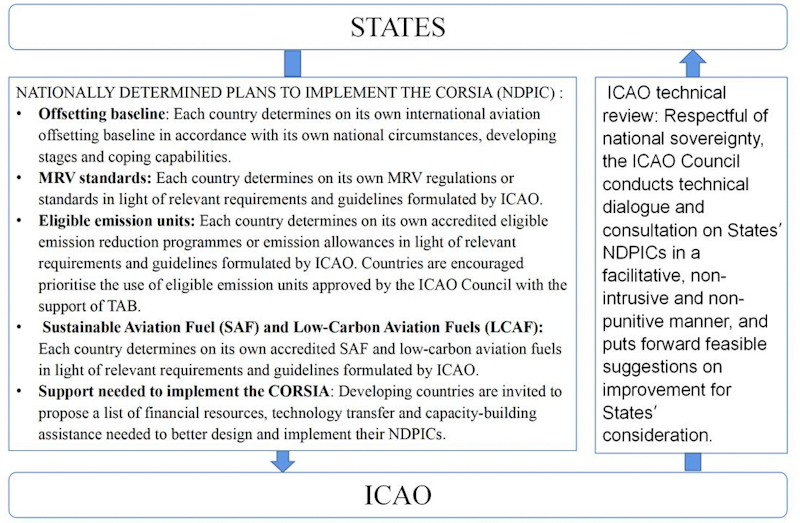
Figure 1: Framework of the Nationally Determined Plans To Implement The CORSIA (NDPIC) proposed by China
In working paper A41-WP/469, China elaborated on its stance and suggestions regarding the targets and measures for international aviation carbon emissions reduction. The document contends that the current CORSIA implementation plan and standards, which are based on ICAO’s goal of carbon-neutral growth starting from 2020 (CNG2020), do not conform to international law and the basic principles of global climate governance. It argues that if developed countries do not fulfil their international obligations under the United Nations Framework Convention on Climate Change (UNFCCC) through ICAO, developing countries will be deprived of fair development opportunities. The specific points are as follows:
■ An analysis of the lack of equity in the current CNG2020, CORSIA implementation pathways and standards, and the 2050 global international aviation carbon neutrality target.
■ Opposition to unilateral and regional market-based measures involving third-party aircraft operators.
■ Proposals for countries to develop self-determined plans to implement a global market-based measures scheme in the form of CORSIA, to contribute to the globally agreed goals by ICAO, while considering the Common but Differentiated Responsibilities and respective capabilities of countries.
■ A recommendation that developed countries should set more ambitious absolute emission reduction targets for their aviation sectors to offset the emissions increases resulting from the growth of aviation transport in developing countries, thereby minimising market distortions.
■ While each participating country may adopt and publish its own calculation methods in its self-determined international aviation carbon offset and reduction implementation plans, it also agrees to the resolution’s stipulation that “from 2021, the carbon emissions to be offset by aircraft operators in a given year will be calculated annually.”
■ A proposal for the ICAO Council, driven by member states, to establish an expert advisory committee to initiate a technical review mechanism for the implementation plans of self-determined international aviation carbon offset and reduction plans by countries, and to suggest improvements for consideration by countries. Any country not implementing these suggestions should not be accused of violating this resolution.
■ Continued improvement by member states of their self-determined international aviation carbon offset and reduction implementation plans, taking necessary actions in accordance with the requirements of Annex 16, Volume IV, and developing national policies and regulatory frameworks based on their own situations and capacities, while recognising the need to support developing countries in effectively implementing international aviation carbon offset and reduction plans.
In contrast to its stance at ICAO, China is cautiously advancing the implementation of market mechanisms domestically. The Civil Aviation Administration of China (CAAC) proposed in its Five-Year Plan in 2022 to “coordinate the construction of domestic and international carbon markets, and promote the establishment of a market-based carbon reduction mechanism for aviation activities.”
China actively promoting SAF
In contrast to CORSIA, China actively promotes SAF. In working paper A41-WP/468, China proposed that “countries refer to relevant ICAO standards or guidelines to determine sustainable aviation fuels and/or low-carbon aviation fuels recognised by their governments.” The Five-Year Plan aims to “promote breakthroughs in the commercial application of sustainable aviation fuels, striving to achieve an annual consumption of more than 20,000 tonnes of sustainable aviation fuels by 2025,” and targets a cumulative SAF consumption of 50,000 tonnes from 2020 to 2025.
It defines SAF as “aviation fuels that meet aviation airworthiness standards and sustainability evaluation standards for aviation fuels.” At the project level, it proposes to accelerate the establishment of a sustainable aviation fuel certification system and fully promote the construction of an airworthiness certification system for sustainable aviation fuels. It aims to conduct regular application demonstrations of sustainable aviation fuels, pilot blended supply models of sustainable aviation fuels at airports with an annual passenger throughput of more than 5 million in regions such as Beijing-Tianjin-Hebei, Yangtze River Delta, Guangdong-Hong Kong-Macao Greater Bay Area, Chengdu, Chongqing and Hainan, and support related airports in accelerating the construction of supporting infrastructure.
The latest news is that the CAAC has identified SAF, the carbon market and efficiency improvements as the three main directions for the green transition of civil aviation in the next five years (2025-2030).
The inconsistency between China’s domestic actions and international commitments on civil aviation’s climate change stance can be found in the Five-Year Plan. It pledges to: “Adhere to independent emission reduction actions, undertake emission reduction responsibilities commensurate with China’s national conditions, the development stage of civil aviation and its capabilities. Fully participate in the global governance process for sustainable development of international civil aviation, uphold the correct view of justice and interests, follow the principles of equity, common but differentiated responsibilities and respective capabilities, strengthen the application of international law, advocate for the establishment of a new international civil aviation emission reduction order with wide participation, independent contributions, mutual learning and benefit sharing, propose more Chinese solutions, promote a balance of obligations and rights, and demonstrate China’s image as a responsible major country.”
From this, several key points can be summarised:
■ Independent emission reductions and independent contributions.
■ The principle of equity and the extension to the principle of common but differentiated responsibilities and respective capabilities.
■ The ‘Chinese solution’.
Accelerating the energy transition
To achieve the goals of “carbon peaking and carbon neutrality”, China’s energy industry is steadfastly accelerating the energy transition, shifting the primary energy source from fossil fuels to non-fossil fuels. As a hard-to-abate sector, the civil aviation industry must make significant adjustments based on China’s macro situation to overcome resource and environmental constraints.
According to roadmaps by IATA, carbon emissions need to be reduced by 1.8 billion tonnes by 2050, with 65% of the emissions reduced through SAF, 13% through new engine propulsion technologies (such as hydrogen), 3% through efficiency improvements and the remainder through carbon capture and storage (11%) and offsets (8%). These measures are reflected in the Five-Year Plan.
Chinese civil aviation has positioned the energy transition, led by SAF, as a crucial node in fostering “new quality productivity” in the latest round of technological and industrial transformation, to achieve a new phase of high-quality development in civil aviation. This also demonstrates the significant role of Chinese civil aviation in building a community with a shared future for mankind. Therefore, China is very proactive and efficient in promoting SAF and other emission reduction measures, recognising that the issue is no longer whether to do it, but how to do it and how to do it well.
In terms of specific actions, due to the differences in national conditions and development stages compared to developed countries in advanced countries and the significant growth needed in the civil aviation transport market in the future, along with the two binding carbon targets of 2030 and 2060 set by the state, China has chosen more pragmatic independent actions, including emission reduction targets and measures. Chinese civil aviation’s vision is that every country should actively contribute to combating climate change but should make independent decisions based on their circumstances, rather than a one-size-fits-all approach.
Principle of equity
In its submitted position papers, China does not oppose the market mechanism of CORSIA, as it has already initiated a national emissions trading system, with civil aviation soon to be included. What Chinese civil aviation disputes is the lack of the principle of equity in CORSIA’s resolution and mechanism design. They often use this metaphor: requiring a growing teenager to diet along with an overweight adult is unfair.
The principle of ‘equity’ emphasises that the responsibilities and measures for emission reductions should consider the historical emissions, economic development levels and emission reduction capabilities of different countries. Developed countries that have competed industrialisation, having accumulated significant historical emissions during their industrialisation process, should bear greater emission reduction responsibilities and provide more financial and technological support. Meanwhile, developing countries need to gradually increase their emission reduction efforts based on their capabilities, promoting sustainable development.
Only on the basis of equity can countries achieve common but differentiated responsibilities and jointly address the severe challenge of global warming. An equitable emission reduction scheme not only promotes international cooperation but also ensures the well-being and environmental sustainability of people worldwide. This climate change principle contrasts with the ‘non-discrimination’ principle of commercial operations in international aviation. However, many developing countries, represented by China, unanimously demand that ICAO reflects the principle of equity in its emission reduction mechanisms.
Unfortunately, only textual confirmation is provided, and it is not reflected in the CORSIA mechanism design. If the climate change principle and aviation operation principle cannot be balanced within the ICAO framework, discrepancies in any emission reduction negotiations and discussions will persist.
China’s anticipated stance at ICAO’s next Assembly
At the ICAO 42nd Assembly in September 2025, China is expected to maintain its established stance, reiterating concerns regarding CORSIA, the implementation paths and standards associated with it, and the 2050 global international aviation carbon-neutrality goal. China believes these targets and pathways are inherently unfair and disadvantageous to developing countries.
Furthermore, because there is currently no intersection between ICAO’s work path and China’s, and with China effectively and confidently taking independent climate actions and involving its national ETS, China will persist with its established stance. The Chinese civil aviation sector will align with the national targets of “achieving carbon peaking by 2030 and carbon neutrality by 2060”, and will not prematurely declare that the aviation industry will achieve carbon neutrality ahead of schedule. Consequently, China will, to a large extent, not join CORSIA’s mandatory implementation phase in 2027.
The ‘Chinese solution’
Chinese civil aviation has made significant progress in responding to climate change and promoting sustainable development. Through the promotion of advanced fuel technologies, optimised route designs and enhanced air traffic management efficiency, China has significantly reduced carbon emissions. Additionally, Chinese civil aviation actively participates in international emission reduction initiatives, sharing experiences with global aviation organisations and counterparts to jointly address global climate challenges. With this series of emission reduction plans, Chinese civil aviation not only demonstrates a firm commitment to reducing carbon dioxide emissions but also strives to achieve significant results through practical actions. These efforts have enabled Chinese civil aviation to confidently push the ‘Chinese solution’, contributing wisdom and strength to the sustainable development of the global aviation industry.
China’s confidence in promoting the ‘Chinese solution’ includes not only technological innovation and operational efficiency improvement but also policy support and international cooperation. Through solid emission reduction actions and comprehensive emission reduction plans, China aims to establish a good international image and demonstrate its responsibility as a major country.
The introduction of the ‘Chinese solution’ will provide valuable experience and a model for the green transition of the global aviation industry, contributing to achieving global carbon neutrality targets. The solution will not only consider ICAO’s resolutions but also reflect its domestic climate change initiative actions, especially as the civil aviation industry is about to be included in the national ETS, which will significantly advance the deployment of CORSIA and SAF, a prospect worth looking forward to.
Photo (H. Goussé, Airbus): Air China A350-900
Views expressed in Commentary op-ed articles do not necessarily represent those of GreenAir.



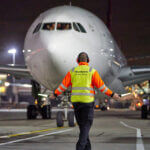
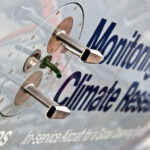



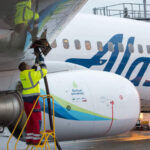
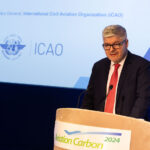



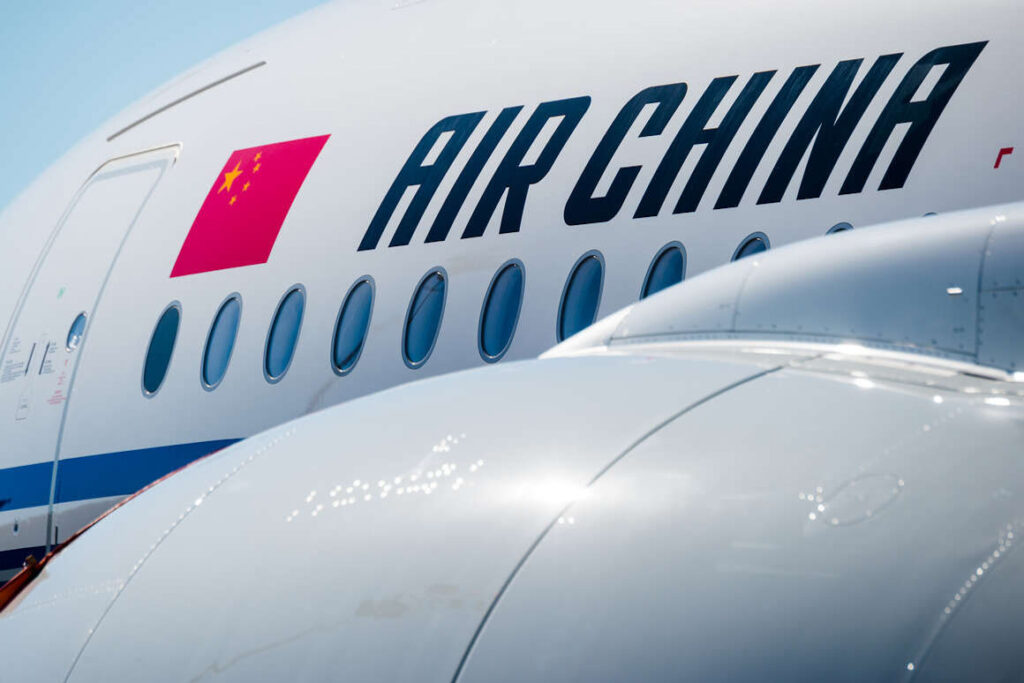


More News & Features
Progress on decarbonising the airline sector has been slow this year, says IATA chief
EASA releases status report on Europe’s SAF production and readiness to meet blending targets
UK government sets out new Jet Zero focus and launches consultation on CORSIA global emissions scheme
European and US research programmes expand to better understand aviation non-CO2 climate effects
T&E joins aviation and climate scientists in urging action to reduce warming contrails
New study highlights differing strategies and barriers to decarbonising aviation in UK and Europe